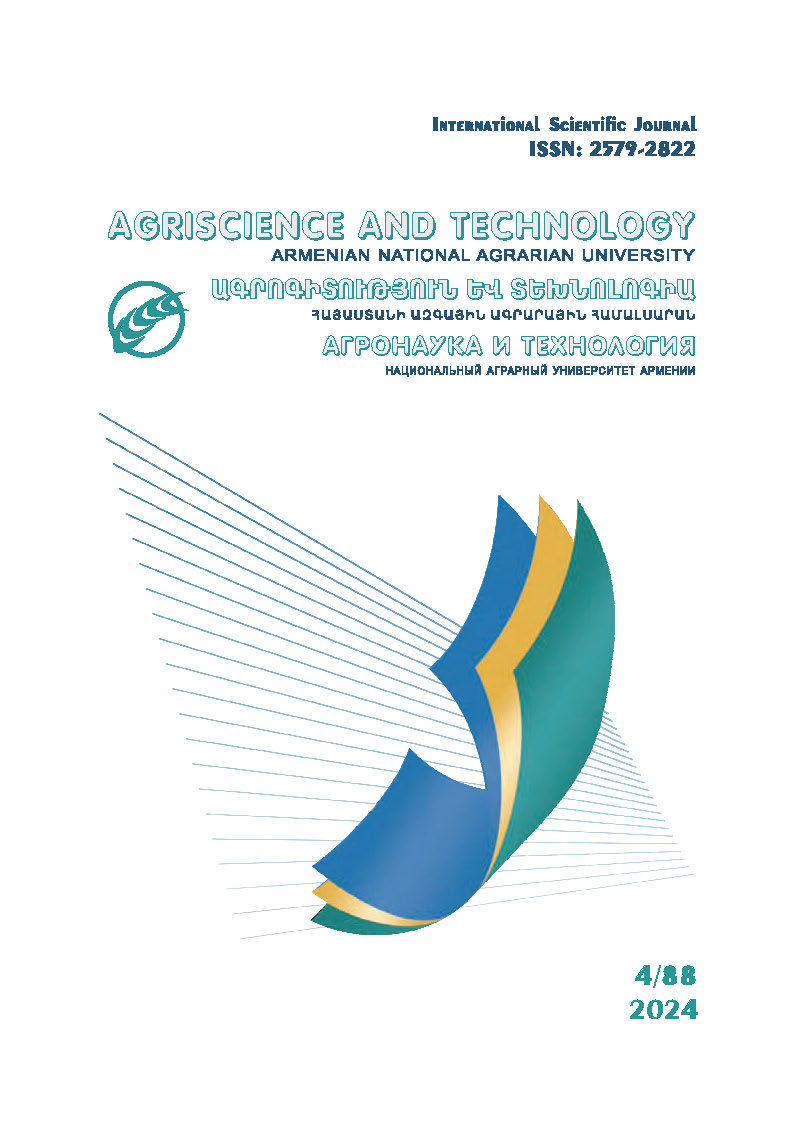Dynamics օf Soil Moisture Deficit and its Impact on Irrigation Water Demand: A Case Study of Kotayk Region
Keywords:
atmospheric precipitation percentile/availability, irrigation water demand, soil moisture deficit, total water consumption, water balanceAbstract
The research is dedicated to the justification of irrigation water demand to ensure the efficient use of irrigated lands in the context of climate change. To this end the dynamics of climate indicators from 1991 to 2023 at the «Yeghvard» meteorological station has been studied, and the total water consumption (evapotranspiration) together with the dynamics of the soil moisture has been calculated. To characterize the degree of annual dryness in conditions of insufficient moisture zones, years with 50 %, 75 %, and 95 % percentile of atmospheric precipitation during the vegetation period were used as reference points for calculations. Given the importance of the issue, the research was conducted using the example of semi-desert gray soils in the Kotayk region. The soil moisture deficit was calculated for both the vegetation period and the entire year. The calculations show that over the past five years, the soil moisture deficit in irrigated semi-desert gray soils in the Yeghvard area has exhibited a negative trend, resulting in a reduction of active soil moisture reserves by 1.410–4.400 m³/ha. This finding supports the observation recorded in recent years within irrigation systems that farming enterprises are using 2 to 3 times more irrigation water than the established norms.
Downloads
Published
How to Cite
Issue
Section
License
Copyright (c) 2025 Gurgen Yeghiazaryan, Razmik Danielyan

This work is licensed under a Creative Commons Attribution-NonCommercial 4.0 International License.
Creative Commons Attribution-Non-Commercial (CC BY-NC). CC BY-NC allows users to copy and distribute the article, provided this is not done for commercial purposes. The users may adapt – remix, transform, and build upon the material giving appropriate credit, providing a link to the license. The full details of the license are available at https://creativecommons.org/licenses/by-nc/4.0/.





